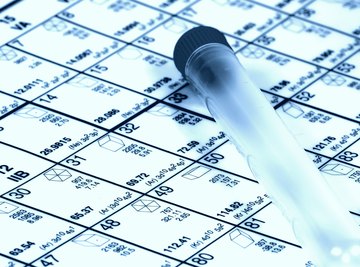
If you look at the left side of the periodic table, you'll see all of the so-called alkali metals in the first column, including lithium, sodium, potassium, rubidium and cesium. All of the hydroxide salts of these metals are soluble, or dissolve, in water and form alkaline solutions. Other solutions are described as alkaline too, however.
Two Meanings
All of the hydroxide salts of these metals are soluble, or dissolve, in water and form alkaline solutions. (If you wanted to do this, though, you would have to do it fast-- hydroxide salts will readily absorb water from the air and dissolve themselves!) Sometimes, chemists use the phrase "alkaline solution" more broadly to refer to any base solution. Bases measure higher than a neutral 7 on the pH scale, and cause the solution to be high in OH- ions. Examples of bases are the kitchen cleaners ammonia and sodium hypochlorite, or bleach.
References
About the Author
Carolyn Robbins began writing in 2006. Her work appears on various websites and covers various topics including neuroscience, physiology, nutrition and fitness. Robbins graduated with a bachelor of science degree in biology and theology from Saint Vincent College.
Photo Credits
Scott Rothstein/iStock/Getty Images
